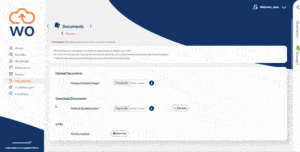When do you finish employee onboarding?
Recruitment and HR teams are always aware of the potential risk of a new employee leaving. In fact, after their initial employee onboarding and first weeks, the biggest risk is from month three to the end of the first year.
This represents a massive potential problem. HR leaders know that the statistics on people staying long term get much better after the first year of employment. They also know that it takes a year, or more to get a real return on investment from a new employee.
So what causes the risk? Well, the recruitment and HR teams we speak to say that they feel like people get lost in the system and aren’t really engaged.
Begin with the end in mind
The solution can come from the groundwork you lay at the beginning of the employee onboarding process. The goal of good onboarding isn’t for recruiters to get people through probation. It’s not just some tick box exercise for HR to say that someone has completed six months of work. The real aim is to deliver a productive employee that stays for years to come. That is where the real return on a recruitment investment comes from.
And, if you, as HR professionals, deliver an engaging process all the way through onboarding and into their first few months of work, it becomes much easier to keep them engaged long term. That is the culture that the company has delivered on and that is how it can continue.
The beginning of the end
Even best-laid plans can come up short though. It is easy to see how Recruitment and HR could notice this engagement fall, even at a later stage.
For example, if an onboardee sees all of the attention and support completely disappear after probation they can feel abandoned and alone. Sometimes it leaves the new hire without purpose which has a big impact on how committed they are to their role long term.
Take a step into a new employee’s shoes. If you think about it for a short while you can see how this could happen. You start with the purpose and drive of getting through probation and securing the job, but what happens after that? What is the next thing that you are working towards? Where is the bigger picture for them in the organisation?
Without additional check-ins at regular dates things start to slip. It is easy for Recruitment and HR teams to lose touch with the process. They leave it to 1-2-1s with managers and short chats that they have to make sure everything is OK, and if other structures around onboarding fall short you risk the work becoming mundane and the appeal of change starting to creep in.
Drive to SMARTer results
This is not an inevitability. The People function of a business can help with this dramatically. An early way to start this is to work with the employee to build out objectives (preferably SMART ones) that don’t just relate to the standard KPIs of their role. Have line managers work with their teams to help them get to these, and HR can be there to guide them through it too. These objectives shouldn’t detract from someone doing their job but small projects that contribute to the overall improvement of the business really give people a sense of involvement in the bigger picture.
You could even look at allowing people to do things outside of their role. It could be charitable work, social planning, or even ambitious side projects that everyone might benefit from (like improving the employee onboarding process!). The sorts of things that large organisations such as Google and IBM adopted as they grew. You can read more about those processes in books like Drive by Daniel H Pink; In The Plex by Steven Levy; and Measure What Matters by John Doerr.




